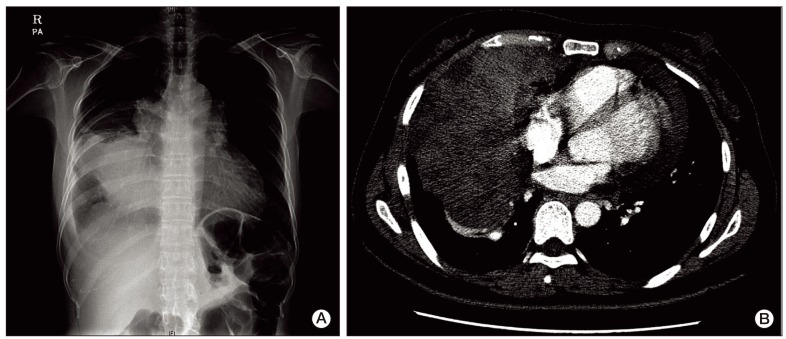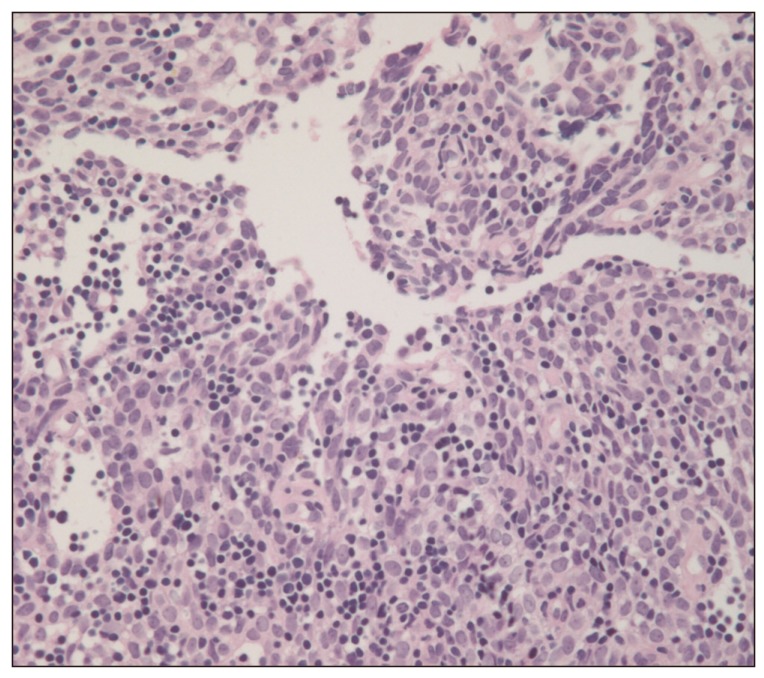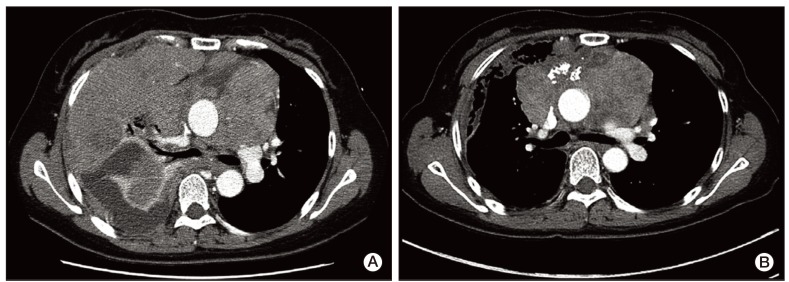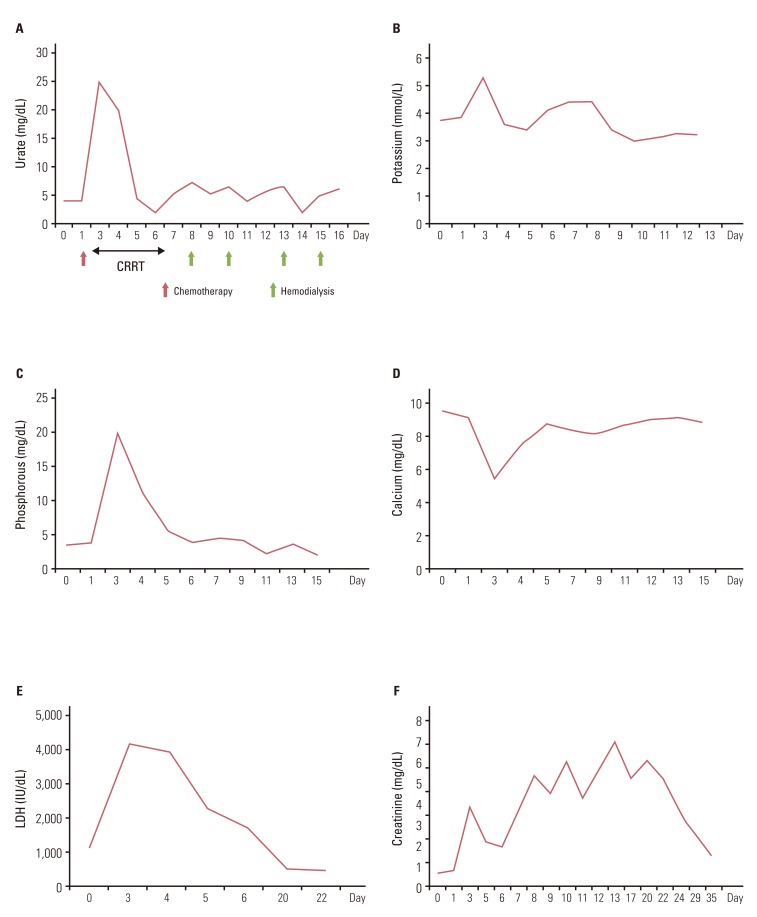Cancer Res Treat.
2013 Dec;45(4):343-348.
Tumor Lysis Syndrome in a Solid Tumor: A Case Report of a Patient with Invasive Thymoma
- Affiliations
-
- 1Division of Hematology-Oncology, Department of Medicine, Samsung Medical Center, Sungkyunkwan University School of Medicine, Seoul, Korea. silkahn@skku.edu
Abstract
- Tumor lysis syndrome (TLS) has rarely been observed in solid tumors. We report on a case of a patient with advanced invasive thymoma who developed tumor lysis syndrome after chemotherapy. The potential complications of TLS should be considered in treatment of extensive thymoma.
Figure
Reference
-
1. Abu-Alfa AK, Younes A. Tumor lysis syndrome and acute kidney injury: evaluation, prevention, and management. Am J Kidney Dis. 2010; 55(5 Suppl 3):S1–S13. PMID: 20420966.
Article2. Cairo MS, Coiffier B, Reiter A, Younes A. TLS Expert Panel. Recommendations for the evaluation of risk and prophylaxis of tumour lysis syndrome (TLS) in adults and children with malignant diseases: an expert TLS panel consensus. Br J Haematol. 2010; 149:578–586. PMID: 20331465.
Article3. Mott FE, Esana A, Chakmakjian C, Herrington JD. Tumor lysis syndrome in solid tumors. Support Cancer Ther. 2005; 2:188–191. PMID: 18628171.
Article4. Baeksgaard L, Sorensen JB. Acute tumor lysis syndrome in solid tumors: a case report and review of the literature. Cancer Chemother Pharmacol. 2003; 51:187–192. PMID: 12655435.5. Gemici C. Tumour lysis syndrome in solid tumours. Clin Oncol (R Coll Radiol). 2006; 18:773–780. PMID: 17168213.
Article6. Howard SC, Jones DP, Pui CH. The tumor lysis syndrome. N Engl J Med. 2011; 364:1844–1854. PMID: 21561350.
Article7. Drakos P, Bar-Ziv J, Catane R. Tumor lysis syndrome in nonhematologic malignancies: report of a case and review of the literature. Am J Clin Oncol. 1994; 17:502–505. PMID: 7977169.8. Castro MP, VanAuken J, Spencer-Cisek P, Legha S, Sponzo RW. Acute tumor lysis syndrome associated with concurrent biochemotherapy of metastatic melanoma: a case report and review of the literature. Cancer. 1999; 85:1055–1059. PMID: 10091788.
- Full Text Links
- Actions
-
Cited
- CITED
-
- Close
- Share
- Similar articles
-
- Fatal Tumor Lysis Syndrome During Chemotherapy in Small Cell Lung Cancer
- High Intensity Focused Ultrasound Treatment-Induced Tumor Lysis Syndrome in Uterine Myoma Patient
- Spontaneous acute tumor lysis syndrome with advanced gastric cancer
- A case report of spontaneous acute tumor lysis syndrome
- Tumor Lysis Syndrome in a Patient with Metastatic Colon Cancer after Treatment with 5-Fluorouracil/Leucovorin and Oxaliplatin: Case Report and Literature Review





